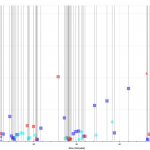 Download available
Download available
Authors:
Travis WestPublication or Conference Title:
M.A. Thesis, McGill UniversityAbstract:
Electroacoustic musical instruments (EAMIs), those new instruments for musical expression that use an electronic transducer such as a loudspeaker to produce sound, are characterized by the separation of control and sound. This modular separation produces the need for EAMI makers to decide how the modules that produce control data should be connected to the modules that expose control parameters. These connections form the mappings in an EAMI, which have been shown to have important influences over the success of any EAMI design.
Although many tools have been developed to help EAMI designers and users to develop effective mappings, relatively little research to date has considered the how these tools are actually used. This thesis presents an exploratory study examining how skilled music technology users make mappings. Our investigation paints a clear picture of mapping design as an iterative process of trial and error, with stages that reflect typical models of creative activities [1] such as learning, exploring, and evaluating. These stages progress in rapid cycles, gradually building up the mapping from individual connections.
We also consider the mappings participants made, and the reasons given for what makes them effective. Recognizing that such evaluations are highly subjective and dependent on the context and approach of each mapping designer, we nonetheless found a common thread that was unanimously recognized as important for effective mappings: in one way or another, effective mappings were always considered highly comprehensible. Whether this understanding came from a clear correspondence between gesture and sound, from an analogy with existing instruments and systems, or from ineffable intuition, all participants justified mappings by the ease with which they could be understood.
These results have clear implications for developers of mapping design tools, as well as EAMI designers making mappings. However, signicant future work remains to be done. In order to fully realize the potential of any mapping design tool, further inquiry must be devoted to the ways in which different design paradigms influence the design process, the diversity of creative goals with which EAMI designers approach mapping design, and the properties of different mappings which allow them to effectively meet those diverse goals.
Publication Details:
Type: |
Masters Thesis |
Date: |
08/01/2020 |
Pages: |
78 |
Location: |
Montreal, Canada |

